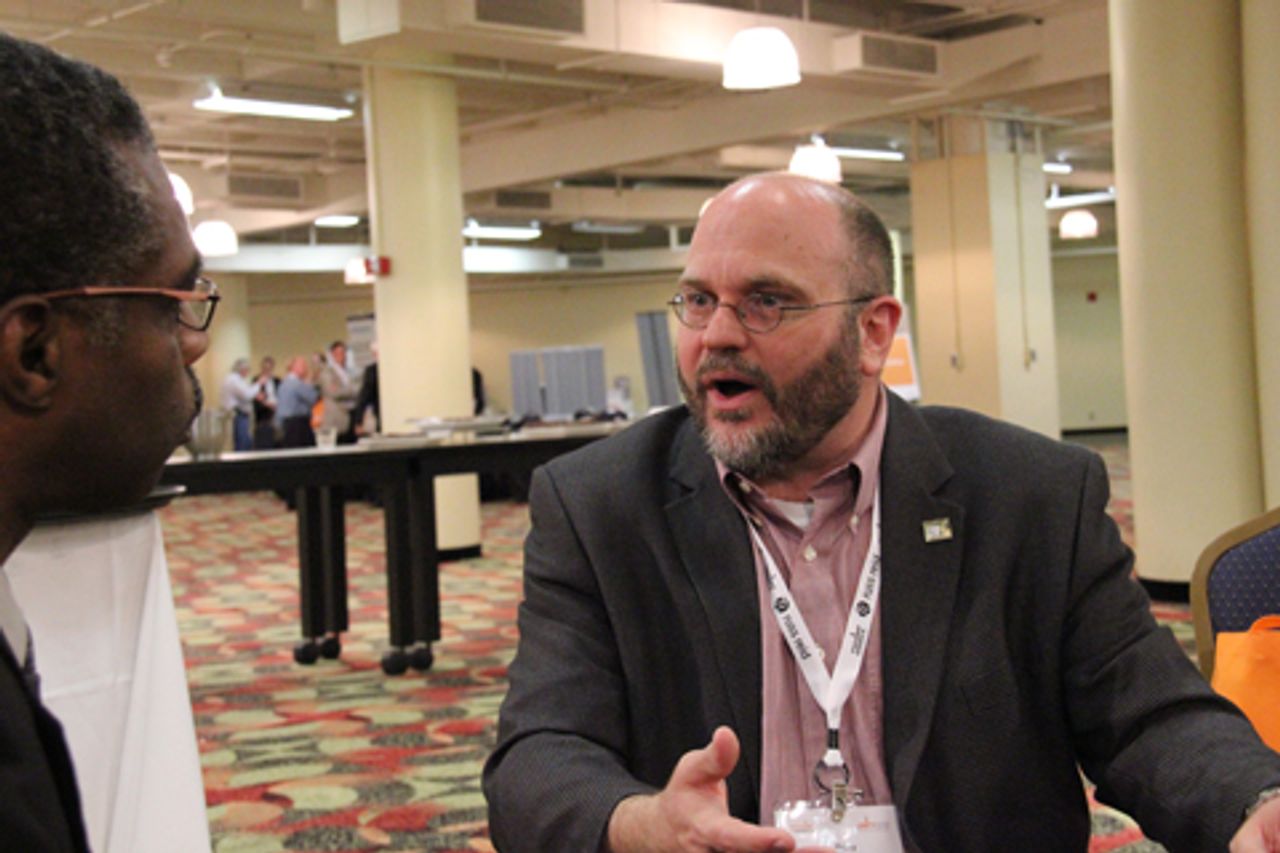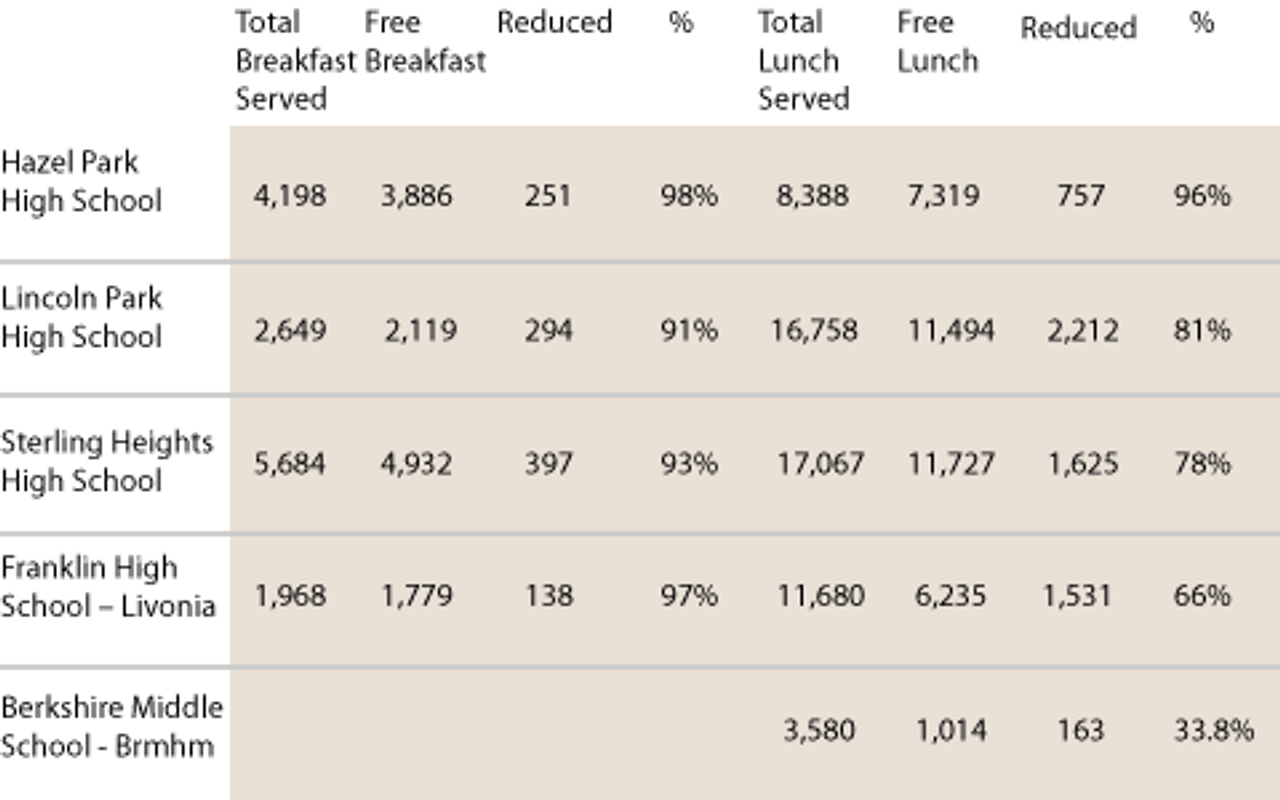The following article is the last in a three-part series on hunger and food banks in America.
Food banks are non-profit charities that collect donated food—unsold items, expired produce or contributions from individuals or growers who have produced too much—warehouse it in a central location, and then provide it to the poor.
The world’s first reported food bank was begun in Arizona, during the post-war boom, in 1967. The overwhelming response enabled the idea to quickly spread throughout the US.
Since the 1980s food banks have become an international phenomenon. Global Foodbanking Network, an umbrella organization of international food banks, now operates in over 20 countries on six different continents, including in Africa, Europe, South America, South Asia, Australia and the US.
Gleaners Food Bank of Southeast Michigan was founded in 1977 and is one of the oldest existing organizations of its kind in the US. Gerry Brisson, a senior administrator, spoke to the WSWS at the Feeding America conference last month about the effects of the current economic crisis on Metropolitan Detroit.
 Gerry Brisson from Gleaners Food Bank
Gerry Brisson from Gleaners Food BankTo give some idea of the dimension of the food needs in southeast Michigan, Gleaners and Forgotten Harvest, the two largest food charity providers in Michigan, feed 780,000 people just within the tri-county area surrounding Detroit (Wayne County, which includes Detroit, and Oakland and Macomb counties). This figure is larger than the population of Detroit alone (now estimated at 714,000).
“When I started working for Gleaners in 2006,” Brisson explained, “the average family that came to a pantry would need help for six months. Now the average family that comes to a pantry needs help for 18 months.”
Brisson said the number one issue at Gleaners is unemployment, followed by a death or divorce, or a health related crisis. “Those are the three things that drive almost 100 percent emergency food needs,” Brisson stated.
The official unemployment rate in Michigan is 8.5 percent, slightly above the 8.2 percent national rate. At the height of the recession, in August 2009, Michigan’s unemployment rate was the highest in the country, 14.2 percent.
The official rate, however, presents a false picture of the real destruction of jobs that has taken place. According to the Gallup polling organization, Michigan’s underemployment is one of the worst in the country, standing at 21 percent or higher.
Between March 2011 and March 2012, there was a staggering drop of 100,000 employed workers in Michigan according to Department of Numbers.
Brisson said in his experience it takes a long time for families to come to the food bank for help. “I can tell you that by the time they come to a pantry they have been missing meals for at least months,” he said.
“Emergency food can’t fill the whole gap because the unemployment issue is so big,” Brisson added.
“The people who are hungry and are struggling to feed their kids—they give up one or two meals a day to feed their kids and then they can’t keep their jobs because they are falling asleep at work.
“It’s very hard for people to put away their pride. I mean, what would I do? I’m just saying, if it were me and I lost my job tomorrow, would I go rushing out to a pantry, even knowing what I know?”
Gleaners is a major participant in the free and reduced federal lunch program administered in the area that it serves. The need is so great that Forgotten Harvest has begun a program to provide 100,000 students with lunch programs during the summer months.
In the five-county region Gleaners serves, the food bank provides 317,000 children with free or reduced-priced lunches. As part of an experimental program administered by the federal government, Detroit is presently one of three cities in the US that provides free breakfast, lunch and snacks to all children in the Detroit public school system.
Brisson pointedly opposed the false idea that deep poverty is predominantly an African American issue, stating that deep poverty exists in every county they serve.
“You can see it in Birmingham or Hazel Park,” he said. “Look at the number of kids getting free or reduced lunch. This is a great indicator to see where poverty is.
“The reason is that families that can take advantage of the program do and it is not embarrassing. Nobody knows. The kid goes up to the line and they are served just like any other kid. Not one person knows that that family is struggling. There is no shame. That’s why it is a really good indicator.
“In Michigan, 25 percent of kids in the state, one out of four, are getting or are in need of emergency food. It is staggering.”
The Michigan Department of Education school breakfast and lunch program shows the widespread poverty existing in predominantly white working class communities in the Metropolitan Detroit area, statistics that rival those within the poorest urban pockets.
 Hazel Park and Lincoln Park are both working class cities that have been devastated by the layoffs in auto and steel. Hazel Park has a poverty rate of 22.5 percent; Lincoln Park’s poverty rate is 16 percent. Sterling Heights in Macomb County is the location of several auto plants and is near GM’s Tech center. Birmingham is considered to be a very middle class city. However, even there 33 percent of middle school students receive free or reduced lunch.
Hazel Park and Lincoln Park are both working class cities that have been devastated by the layoffs in auto and steel. Hazel Park has a poverty rate of 22.5 percent; Lincoln Park’s poverty rate is 16 percent. Sterling Heights in Macomb County is the location of several auto plants and is near GM’s Tech center. Birmingham is considered to be a very middle class city. However, even there 33 percent of middle school students receive free or reduced lunch.
Brisson reflected, “If you are a kid and you don’t know if you are going to have dinner, what are you thinking about in school? Are you thinking about math and English? No, you are thinking, ‘I wonder what friend I could snag a ride with that might give me an apple. You know, I wonder if I could go to Jimmy’s house for dinner?’
“So, in school you are planning your day by who you may be able to latch onto that could get you some food. And you know that’s pretty important. The ingenuity to be able to do that itself is kind of amazing. But, you are not learning your math lessons. You are not learning your English lessons. That’s the problem; you are distracted.
“Do you want 25 percent of kids, do you want 25 percent of adults several years from now to not have paid attention in school? The data is overwhelming.”
Concluded
